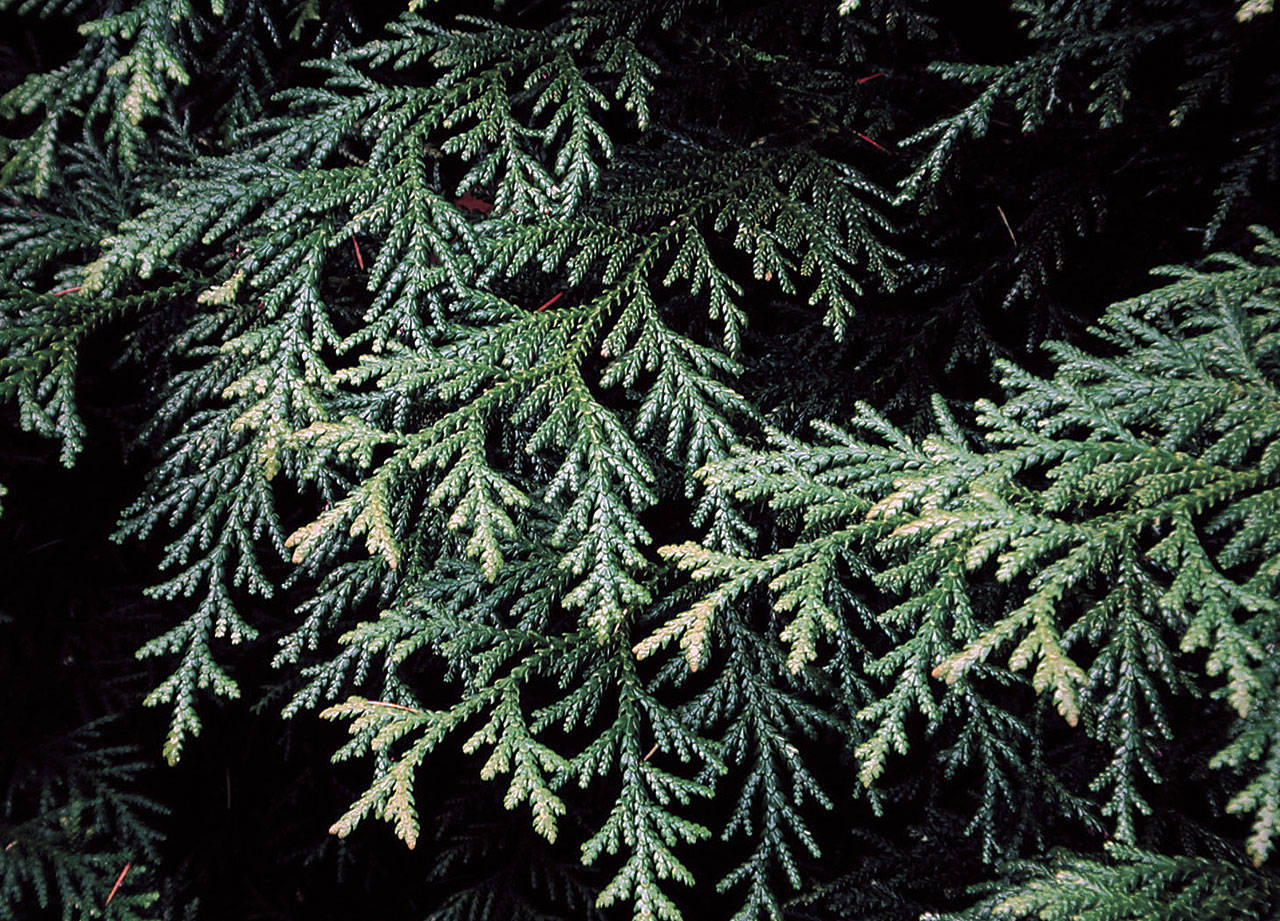What: Thujopsis dolabrata is a slow-growing, refined evergreen warranting more use in the Northwest. While similar to our Western red cedar, it has bolder foliage that is a glossy deep-forest green above, with beautifully startling white markings beneath. Its leaves are held in wide, flat branchlets, making the overall effect is richly textural. The distinctive foliage has inspired two rather curious common names: deerhorn cedar and battle axe cedar (“dolabra” means hatchet in Latin.) This tree grows in shady, moist forests in its native Japan and suffers if planted in a dry location. Give Thujopsis dolabrata plenty of space to develop its uniform, pyramidal habit. Its texture is fine enough for a formal garden, but equally at place in the casual landscape.
Where: Hiba cedar grows best in full sun or light to open shade. The soil can be of an average type, but should be well-drained.
Size: This tree will grow to be 50 feet tall and 20 feet wide when mature.
Care: Frequent to regular watering is best during prolonged periods of drought. No pruning is required for proper growth.
— Richie Steffen, Great Plant Pick
Talk to us
> Give us your news tips.
> Send us a letter to the editor.
> More Herald contact information.

























